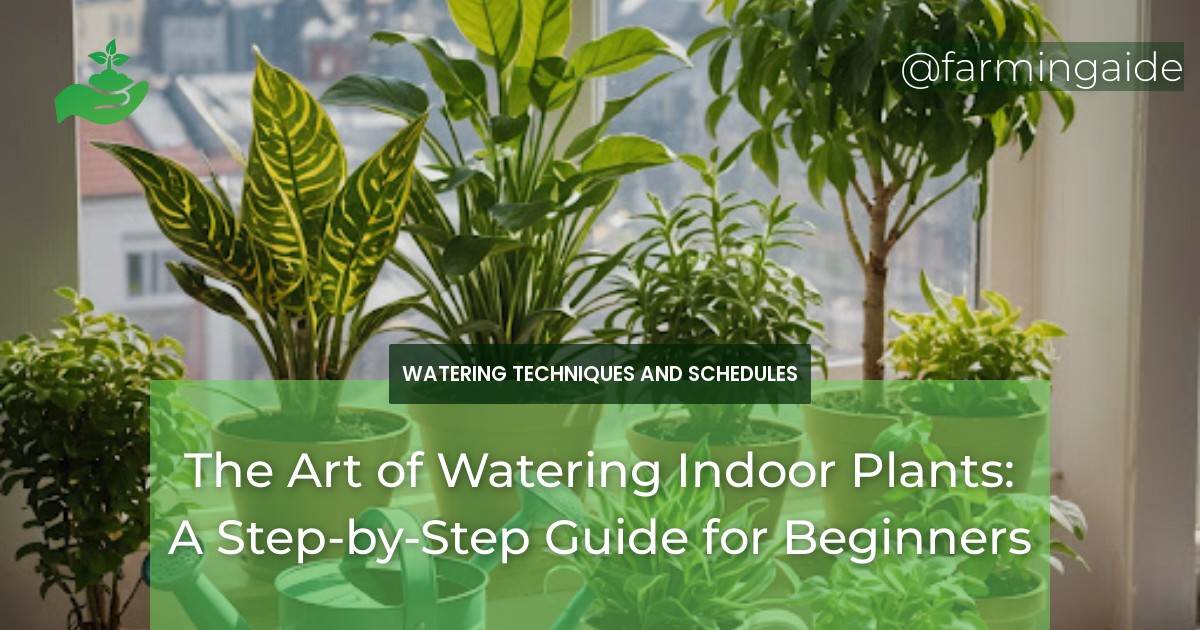Welcome to the world of indoor gardening! As a beginner, it can be overwhelming to navigate the intricacies of watering your plants. Overwatering, underwatering, and finding the perfect balance can be a daunting task. Fear not, dear reader, for we’re about to dive into the ultimate guide to watering indoor plants. In this comprehensive guide, we’ll cover the essential tools, techniques, and tips to ensure your plants thrive.
Key Takeaways
- Understanding your indoor plants’ water needs is crucial for their survival.
- Choosing the right watering can and tools can make a significant difference.
- Watering frequency and timing are critical for optimal plant health.
- Monitoring and adjusting your watering routine is essential for long-term success.
- Avoiding common mistakes and staying informed will keep your plants happy and healthy.
Understanding Your Indoor Plants
Before we dive into the world of watering, it’s essential to understand the types of plants you’re caring for. Different plants have unique water requirements, and knowing these needs is crucial for their survival. From succulents to ferns, each plant type has its own set of rules.
Some plants, like cacti and succulents, are designed to store water and can survive with minimal watering. Others, like ferns and peace lilies, require consistent moisture to thrive. Understanding the specific needs of your plants will help you tailor your watering schedule accordingly.
Types of Indoor Plants and Their Water Needs
Here’s a quick rundown of popular indoor plants and their watering requirements:
| Plant Type | Watering Needs |
|---|---|
| Succulents and Cacti | Infrequent, sparse watering |
| Ferns and Peace Lilies | Frequent, consistent watering |
| Herbs and Leafy Greens | Regular watering, with occasional drying out |
Signs of Overwatering and Underwatering
It’s crucial to recognize the signs of overwatering and underwatering to prevent damage to your plants. Here are some common indicators:
Overwatering:
- Yellowing or droopy leaves
- Soft, mushy stems
- Water pooling around the base of the plant
Underwatering:
- Wilted or crispy leaves
- Stems that are dry and brittle
- Soil that’s dry to the touch
Essential Tools for Watering
Now that we’ve covered the basics of understanding your plants, it’s time to talk tools. Having the right equipment can make all the difference in your watering routine.
ALSO READ
Choosing the Right Watering Can
A good watering can is an essential tool for any indoor gardener. Look for one with the following features:
- A long, curved spout for precise watering
- A comfortable, ergonomic handle for easy grip
- A capacity of at least 1-2 liters for efficient watering
Other Helpful Tools and Accessories
In addition to a watering can, consider investing in the following tools:
- A moisture meter to gauge soil moisture levels
- A watering globe or bulb for controlled watering
- A spray bottle for gentle, targeted watering
The Science of Watering
Now that we’ve covered the basics, it’s time to dive into the science behind watering. When and how often you water can make all the difference in your plants’ health.
ALSO READ
How Often to Water Indoor Plants
The frequency of watering depends on several factors, including the type of plant, pot size, and climate. As a general rule, water your plants:
- Every 1-3 days during hot, dry weather
- Every 4-7 days during mild, humid weather
- Every 7-10 days during cool, dry weather
The Best Time of Day to Water
Timing is everything when it comes to watering. Water your plants:
- In the morning, to give them a boost for the day
- Avoid watering in the evening, as this can encourage fungal growth
Techniques for Effective Watering
Now that we’ve covered the basics of watering, let’s dive into some advanced techniques for optimal plant health.
Top-Down vs. Bottom-Up Watering
There are two main methods of watering: top-down and bottom-up. Top-down watering involves pouring water directly onto the soil surface. Bottom-up watering, on the other hand, involves placing the pot in a saucer of water and allowing the plant to absorb what it needs.
Watering Specific Plant Types
Some plants require special care when it comes to watering. For example:
- African Violets: Water from the bottom to prevent leaf spotting
- Cacti and Succulents: Water sparingly, allowing the soil to dry completely between waterings
Monitoring and Adjusting Your Watering Routine
As you continue to care for your plants, it’s essential to monitor their progress and adjust your watering routine accordingly.
Using a Moisture Meter
A moisture meter is a handy tool for measuring soil moisture levels. This can help you determine when it’s time to water and avoid overwatering.
Seasonal Adjustments to Watering
As the seasons change, your plants’ watering needs will shift. Adjust your routine accordingly:
- Increase watering during hot, dry summer months
- Decrease watering during cool, wet winter months
Conclusion: Mastering the Art of Watering
Watering indoor plants is an art that requires patience, practice, and attention to detail. By understanding your plants’ unique needs, choosing the right tools, and mastering advanced techniques, you’ll be well on your way to becoming a pro.
Common Mistakes to Avoid
Here are some common mistakes to steer clear of:
- Overwatering: Be cautious of frequent, heavy watering
- Underwatering: Don’t neglect your plants’ watering needs
- Ignoring plant signs: Pay attention to your plants’ signals, such as yellowing leaves or droopy stems
Final Tips for Healthy Indoor Plants
Here are some parting tips for healthy, thriving indoor plants:
- Monitor and adjust your watering routine regularly
- Keep your plants clean and well-pruned
- Provide adequate light and nutrients for optimal growth
By following these guidelines, you’ll be well on your way to becoming an indoor gardening pro. Happy planting!


